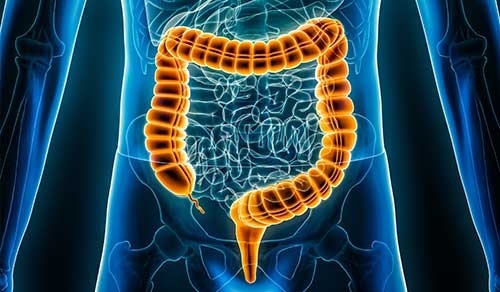Uncovering the Relationship between COVID-19 & Obesity
Shiara Ortiz-Pujols, MD, MPH, and Beverly Tchang, MD, specialists in obesity medicine at NewYork-Presbyterian/Weill Cornell Medical Center, have been exploring the link between obesity and its association with a higher risk of developing severe symptoms and complications of COVID-19. Why are patients with obesity at higher risk of infection in general? And is there something special about COVID-19 that further predisposes this population to more morbidity?
“In all of the epidemiologic studies, obesity is always among the top three risk factors for severity of illness, risk of intubation, or another worse outcome,” says Dr. Tchang, an endocrinologist in the Department of Endocrinology, Diabetes and Metabolism. “The question is always why?”

Dr. Beverly Tchang
As Dr. Tchang points out, COVID-19 has proven to be primarily a respiratory illness and obesity can contribute to respiratory dysfunction. “Pulmonologists point to mechanisms of overall reduced system compliance, which essentially increases airway resistance, or the simple mass effect on the thorax that fights the negative pressure needed to expand the lungs,” she says. “There are other mechanisms that are more specific to respiratory illnesses that you might see in obesity, such as obesity hypoventilation syndrome, where we think leptin resistance plays a role because leptin stimulates ventilation. Asthma is also a very common comorbidity in patients with obesity. One recent study of individuals with higher BMIs found an increase in inflammation, particularly around the airways, that correlated with increased airway thickening. So, there are respiratory problems that may compound the symptoms that COVID-19 causes.”
“In all of the epidemiologic studies, obesity is always among the top three risk factors for severity of illness, risk of intubation, or another worse outcome. The question is always why?”
— Dr. Beverly Tchang
As the pandemic unfolded, Weill Cornell endocrinologist Rekha B. Kumar, MD, MS, was called on to help care for patients with COVID-19. Dr. Kumar, who is also Medical Director of the American Board of Obesity Medicine, began noticing that individuals with obesity were having a more difficult time in terms of morbidity and mortality. “That very much resonated with what was being published coming out of China and Italy, but interestingly, all of these reports were letters or editorials saying that we need to watch for this,” says Dr. Ortiz-Pujols, who early on collaborated with Dr. Kumar and gastroenterologist Reem Z. Sharaiha, MD, MSc, on studying early results from the NewYork-Presbyterian/Weill Cornell COVID-19 patient registry. “Because the rates of overweight and obesity are so much higher here in the United States, we had an opportunity to not just say that we’re seeing this, but actually put some numbers to it.”
Seeking Answers in an Early-Stage Research Study
Dr. Ortiz-Pujols and her colleagues gathered data on 975 adult patients, including baseline demographics and clinical characteristics, admitted to NewYork-Presbyterian/Weill Cornell and NewYork-Presbyterian Lower Manhattan Hospital between March 4 and April 9, 2020, with follow-up on April 16 of outcomes. Their primary focus was on the composite of ICU admission, with or without invasive mechanical ventilation, or death.

Dr. Shiara Ortiz-Pujols
“Our question going into this study was to learn if BMI had an effect on a person's experience with the disease,” says Dr. Ortiz-Pujols. “Of the 975 patients, 770 had both a confirmed diagnosis of SARS-CoV-2 and complete BMI data, which was abstracted from the medical chart. Of those 770, the mean age was 63, the mean BMI was 29, and the majority of the hospitalized patients – 61 percent – were men. We also found that there was an inverse relationship between age and patient BMI. By that I mean that the older the patient, the more likely they were to be either normal weight or be overweight. The younger patients tended to have obesity, with many having class 3 obesity.”
Dr. Ortiz-Pujols and colleagues also observed that patient presentation, i.e. presenting symptoms, differed depending on where the patient fell on the weight spectrum. For example, patients who were underweight (BMI < 18.5 kg/m2) were less likely to present with fever as opposed to those with normal weight. They were also less likely to present with dry cough and shortness of breath. “The potential implication of these observations is the possibility that many people who were underweight may not have been offered the COVID-19 test when they presented to the emergency room. Furthermore, many may have presented later in the disease,” notes Dr. Ortiz-Pujols. “These are important concerns that require further study.”
Some 73 to 79 percent of patients with overweight or obesity presented with fevers, over 70 percent had a dry cough, and the majority presented with tachycardia. “These are all signs of distress, and just overall more advanced disease than someone who did not have all of these symptoms,” says Dr. Ortiz-Pujols.
“One of the major indicators not only for hospital admission, but also ICU admission, is the degree of hypoxia. Those who were at the extremes of the weight spectrum – those with underweight and those with obesity/severe obesity – tended to have worse hypoxemia, meaning that they needed maximal support in order to maintain oxygen saturations over 95 percent,” continues Dr. Ortiz-Pujols. “However, we need a larger cohort to look at in order to better answer why those with underweight had more hypoxemia. It could be that they had pre-existing lung conditions, such as COPD, or perhaps they did not have regular medical care resulting in more undiagnosed underlying conditions that may have contributed to worse disease. There are so many reasons why patients at the extremes of the weight spectrum are having a more difficult time.”
In their study, which was published in the May 29, 2020 online issue of Obesity, Dr. Ortiz-Pujols and her colleagues found that obese patients, defined as having a BMI greater than 30, had two times the odds of requiring ICU admission and/or mechanical ventilation, and higher risk of mortality. The authors concluded, “Obese patients had an increased risk of critical illness leading to ICU admission or death compared to normal weight individuals. This study confirms that obesity is a major risk factor for COVID-19 disease severity, significantly impacting disease presentation and critical care requirements.”
Proinflammatory and Prothrombotic: Examining Mechanistic Theories
“Systemically, obesity itself is associated with a more proinflammatory and prothrombotic state,” notes Dr. Tchang. “Many adipocyte researchers talk about adiposopathy, which is essentially ‘sick fat.’ They describe how the accumulation of visceral adipose tissue creates a somewhat ischemic microenvironment that induces the production of proinflammatory cytokines, such as IL-6 and TNF-alpha, which are also elevated in infection, as well as prothrombotic factors that increase their risk for clots.”
“People with obesity already live in a proinflammatory state. Introducing a virus that’s going to prompt a cytokine reaction – a proinflammatory reaction on top of a proinflammatory milieu – is why we may be seeing these cytokine storms.”
— Dr. Shiara Ortiz-Pujols
“With visceral adipose tissue, we’re not just talking about the adipose tissue around the kidneys or the liver; we’re also talking about the epicardial adipose tissue right near the main coronary arteries,” explains Dr. Tchang. “When you’re having excess prothrombotic factors being produced in those areas, it’s not a far reach to say that that might actually be affecting the endothelium and increasing the risk for thrombosis. Then when we connect that to COVID-19, where people are having myocardial infarctions and pulmonary embolisms, I think all of that is slowly coming together to form mechanistic hypotheses.”
“People with obesity already have a higher risk of thrombotic complications in the absence of COVID-19,” adds Dr. Ortiz-Pujols. “They already live in a proinflammatory state. Introducing a virus that’s going to prompt a cytokine reaction – a proinflammatory reaction on top of a proinflammatory milieu – is why we may be seeing these cytokine storms. We know that visceral adipose tissue has increased expression of the very receptor that the virus uses to enter the body. Is that why people with obesity are having a more difficult time? Is the adipose tissue serving as a source for greater viral replication?”
“There’s so much that still needs to be evaluated using multiple institutions that look at more diverse populations,” notes Dr. Ortiz-Pujols. “We need to see if we can tease through all of these potential confounders to get to more mechanistic reasons as to why we’re seeing the trends that we are observing.”
Reference Article
Hajifathalian K, Kumar S, Newberry C, Shah S, Fortune B, Krisko T, Ortiz-Pujols S, Zhou XK, Dannenberg AJ, Kumar R, Sharaiha RZ. Obesity is associated with worse outcomes in COVID-19: Analysis of early data from New York City. Obesity (Silver Spring). 2020 May 29:10.1002/ oby.22923. [Online ahead of print]
Related Publications







